Engine Shed Railway
Circular type engine shed:
1. This type of shed consists of radiating tracks and a circular structure known as round house
2. A turn table is also provided with the help of turn table the incoming locomotive is put up on the unoccupied track of the shed
3. Needs less place
4. Skilled labour is needed for the construction
Engine sheds
Water Columns
1. A water crane is a device used for delivering a large volume of water into the tank or tender of a steam locomotive. The device is sometimes also called a water column.
2. As a steam locomotive consumes large quantities of water, water cranes were a vital part of railway station equipment, often situated at the end of a platform, so that water could be refilled during a stop at the station.
3. They are kept at all main line tracks at a distance of not less than 50Km.
4. It should not any obstruction to traffic.
5. Foot valve is provided to regulate the water flow.
6. Height of water column is 442cm.
7. Projection of pipe is about 225 cms.
Water Column & Ash Pit
Ash pits: (Ash-pans)
1. Ash pits are provided to collect the ashes from the locomotives
2. They are generally 1.067m deep and length is slightly more than the length of the locomotive.
3. They rest on masonry or concrete walls and rails are fixed on longitudinal beams provided at the top of the walls
Turn table
1. A turntable is a device used to turn railroad rolling stock.
2. Turntables were also used to turn observation cars so that their windowed lounge ends faced toward the rear of the train.
3. A turntable is a large circular platform which is used to turn locomotives and other rolling stock for railways.
4. A well-engineered turntable is designed in such a way that the efforts of only two or three people are needed to operate the turntable, even when dealing with very large and heavy locomotives.
5. The reason the turntable was developed was because early steam locomotives were somewhat difficult to run in reverse.
6. As a result, train companies started building turntables so that they could quickly turn their locomotives around.
Triangles
1. Triangles are used for turning railway equipment.
2. By performing the railway equivalent of a three-point turn, the direction of a locomotive or railway vehicle can be swapped around, leaving it facing in the direction from which it came.
3. It consists of three short lengths of tracks laid to form a triangle and connected to each other by three pairs of points and crossings. Two tracks are laid in curves and third as straight.
4. The engine moves completely round the triangle and its direction is automatically changed.
Buffer Stops
1. A buffer stop or bumper is a device to prevent railway vehicles from going past the end of a physical section of track.
2. The design of the buffer stop is dependent in part upon the kind of couplings that the railway uses,
since the coupling gear is the first part of the vehicle that the buffer stop touches.
3. It consists of timber beam 30x13cm section of the level of buffer on vehicles, fixed to the two vertical rail parts bolted to the track rails on other ends.
Fouling Marks
1. Purpose is to avoid side collision between two trains on adjacent track.(in between diverging/converging tracking rear of t/in curve).
2. It should be fixed at the point where the spacing between the tracks begins to reduce to less than the minimum as specified in schedule of dimension.(i.e. 4.27 Meter track centre normally).
3. They are made up of stone or concrete blocks and painted in black and white.
Examination pits
1. Examination pits are similar to ash pits but they are used to examine the engines from underneath.
2. These pits are generally longer and deeper than the ash-pits
3. Provided in locomotive yards
Traversers
1. Traversers are used to shift the position of the vehicles or locomotives sideways.
2. They provide an arrangement of transferring engines and vehicles from one track to a parallel track.
3. Traversers are preferred to turnouts, cross-overs, etc.
4. It consists of a platform mounted on rollers.
5. Vehicle to be shifted is placed on the traverser and then the traverse is moved sideways and adjusted to the parallel track where the vehicle is to be placed.
Derailing switch
1. A derailing switch is an ordinary point switch.
2. The switch is open in the normal position and is generally provided near the dead end of the siding.
3. Any vehicle passing over it shall be derailed because of break of continuity of rails.
Drop Pits
1. These are constructed at right angle to the track to examine and repair or to replace the old wheels by new ones.
2. In these pits the wheels of the locomotives are lowered and the wheels and axles are taken out with the help of different kinds of jacks.
Scotch Block
1. It consists of a block of wood placed on the rail and suitably held and locked in position
2. It forms an obstruction to the passage of vehicles and hence it prevents the escape of vehicle beyond the dead end of the siding
Scotch and Sand Hump
Sand hump
1. Method of checking vehicle.
2. The rails in the dead end siding after some fixed distance get embedded in the sand and come to rest.
Weigh Bridge
1. These are level platforms with rails and are connected to the main track.
2. The beam rests on the knife edge and attached to the lever to which loaded wagons come to the siding to the weigh bridge is fixed.
3. The lever mechanism is activated and weight is indicated.
POINTS AND CROSSINGS
Purpose for providing points and crossings:
1. It is the name given to the arrangement which diverts the train from one track to another, either parallel to or diverging from the first track.
2. Point and Crossings are peculiar arrangement used in permanent way (railway track) to guide the vehicle for directional change.
Some Definitions
1. Angle of crossing: It is the angle between the running faces of point rail and splice rail.
2. Branch Track: Track to which train is diverted from main track.
3. Check rails: To prevent the tendency of wheel to climb over the crossing rail lengths are provided on the opposite side of the crossing.
4. Heel block: It is the CI block to which tongue rail and lead rails are both bolted.
Branch Track
Check rails
Heel block
5. Lead Rails: They are the rail which lead the track from heel of the tongue rail to the toe of the crossing.
6. Nose of crossing: It is the point at which rail, splice rail, or two point rails meet.
7. Tongue rail: These are tapered rails.
8. Switch: It consists of tongue rail and a stock rail.
9. Throw of switch: Both the tongue rails move through the same distance or gap, this gap is known as throw of switch.
Lead Rails
Nose of crossing
Tongue rail
Switch
Throw of Switch
10. Switch angle: It is the angle formed between the gauge face of the stock rail and the tongue rail.
11. Turn outs: A complete set of points and crossings along with a lead rail is known as turnout.
12. Facing direction: If someone stands at toe of switch and looks towards the crossing it is called facing direction.
13. Trailing directions: If someone stands at the crossing and looks towards the switches, then the direction is called Trailing direction.
Switch Angel
Turn Outs
Turnout
14. Facing points or Facing turn outs: When the train pass over the switches first and then they pass over the crossing
15. Trailing points or Trailing Turnouts: The opposite side of facing points in which the trains pass over the crossings first and then over the switches.
Right Hand Turn out and Left Hand Turn out
1. If a train from main track is diverted to the right of the main route in the facing direction, then this diversion is known as Right-hand turnouts.
2. If a train from main track is diverted to the left of the main route in the facing direction, then this diversion is known as Left-hand turnouts.
Right Hand Turn out
Left Hand Turn out
Sleeper Laid for Points and crossing
Two methods of laying sleepers below the points and crossing
1. Through sleepers
2. Interlaced sleepers
Through sleepers and Interlaced sleepers
Through sleepers
1. They are provided in the overall length of points and crossing.
2. Through sleepers maintain several rails at the same level especially in straight and curved tracks.
3. Difficulties in the procurement and transporting of long sleepers.
Interlaced sleepers
1. Adopted when longer sleepers are not available.
2. Both the tracks are laid on different sleepers, the curved track often deforms and causes difficulties in maintenance.
3. Also possess difficulties in the proper packing of the ballast.
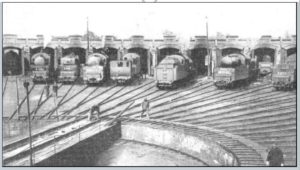
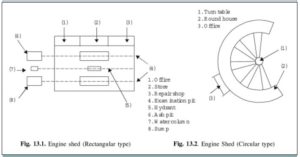
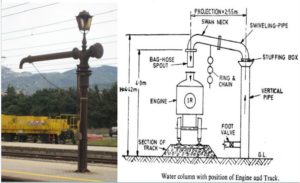
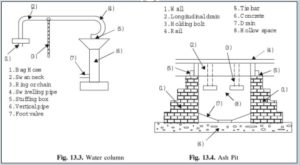
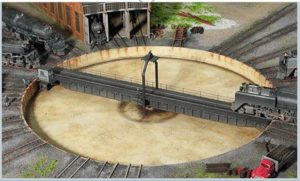
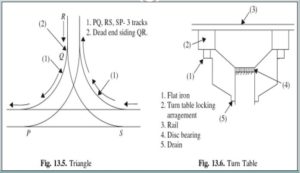
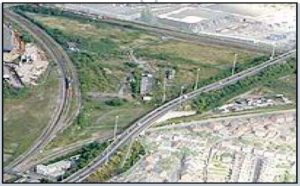
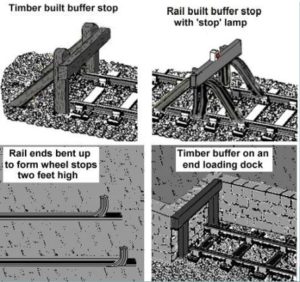
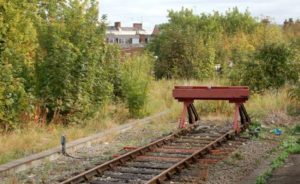
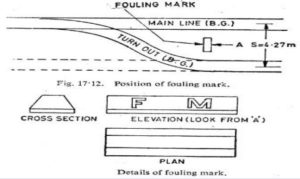
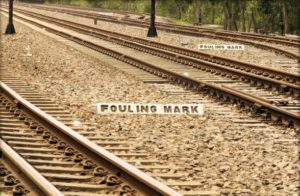
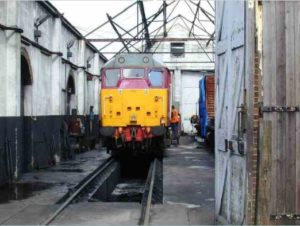
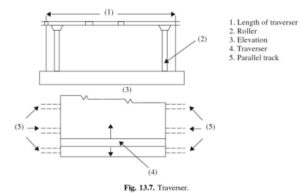
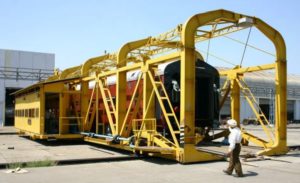
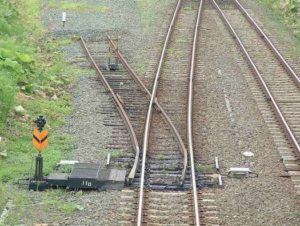
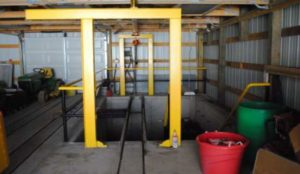
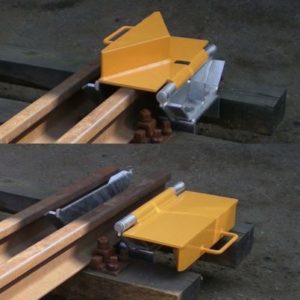
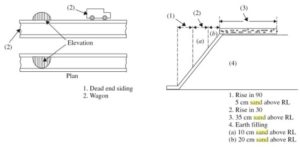
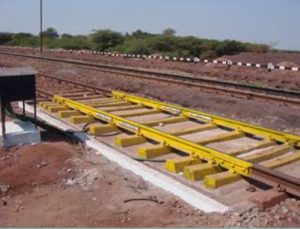
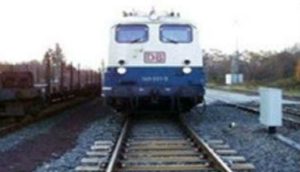
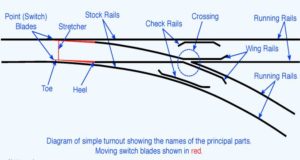
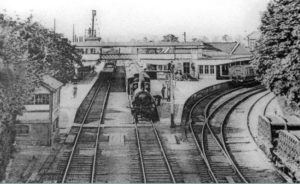
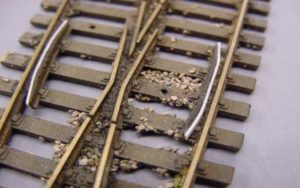
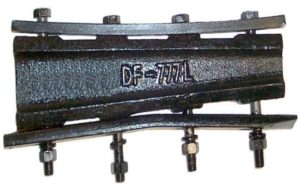
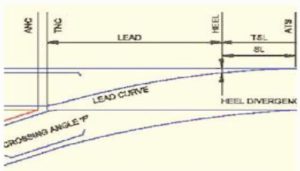
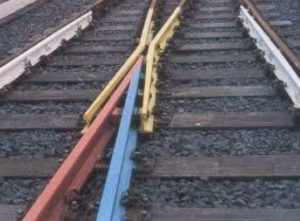
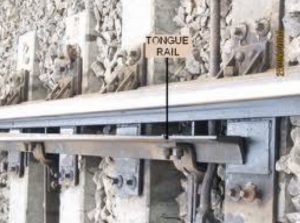
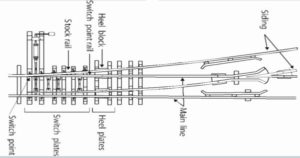
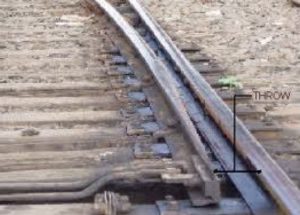
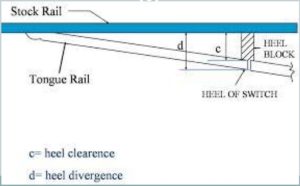
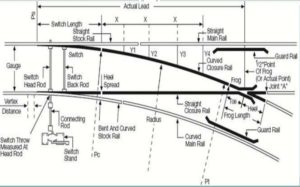
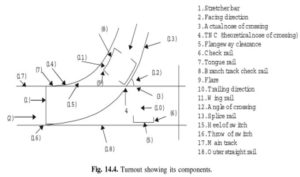
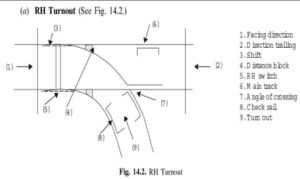
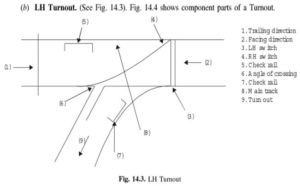
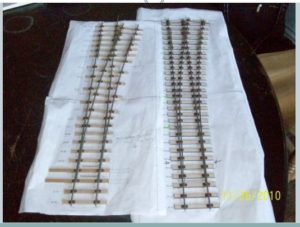
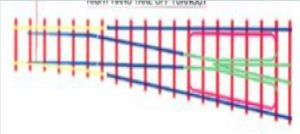
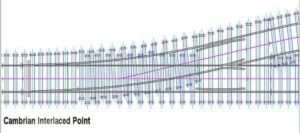
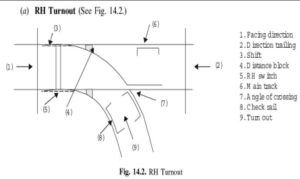
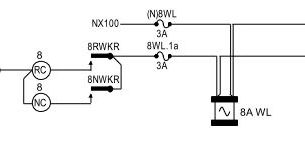
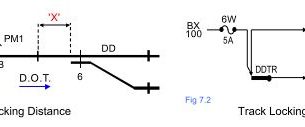
Thank you for your share, very helpful website